The mobile app industry has rapidly evolved over the past decade, becoming a cornerstone of the digital economy. With millions of apps available across various platforms, achieving success in this competitive landscape requires a deep understanding of best practices. This article delves into the essential strategies that can help developers and entrepreneurs navigate the complexities of app development, marketing, and user acquisition.
Whether you’re a seasoned developer or a newcomer, adhering to these best practices can significantly enhance your app’s chances of success. From initial planning and design to post-launch marketing and analytics, each stage plays a crucial role in the app’s lifecycle. By focusing on these key areas, you can create a robust and user-friendly app that stands out in the crowded marketplace.
Ready to take your mobile app to the next level? Book A Consultation Now!
Effective Mobile App Development Strategies

When it comes to achieving success in the mobile app industry, having effective development strategies is paramount. The development phase lays the foundation for your app’s functionality, user experience, and overall performance. Here are some key strategies to consider:
- Define Clear Objectives: Before diving into development, clearly outline the goals and purpose of your app. This will guide the design and functionality, ensuring that every feature aligns with your objectives.
- User-Centered Design: Focus on creating an intuitive and engaging user experience. Conduct user research and usability testing to understand your audience’s needs and preferences. This will help you design an app that is both functional and enjoyable to use.
- Agile Development: Utilize agile methodologies to allow for flexibility and iterative improvements. This approach enables you to respond to user feedback and market changes quickly, ensuring that your app remains relevant and competitive.
- Quality Assurance: Rigorous testing is crucial to identify and fix bugs, ensuring a smooth user experience. Implement various testing methods, such as unit testing, integration testing, and beta testing, to catch issues early and enhance the app’s reliability.
- Scalability: Plan for scalability from the beginning. As your user base grows, your app must handle increased traffic and data without compromising performance. Invest in scalable architecture and cloud solutions to accommodate future growth.
By incorporating these strategies into your development process, you can build a strong foundation for your app, setting the stage for successful marketing and user acquisition efforts.
Optimizing User Experience and Interface Design

In the competitive mobile app industry, optimizing user experience (UX) and interface design (UI) is crucial for retaining users and ensuring long-term success. A well-designed app not only attracts users but also keeps them engaged. Here are some best practices for optimizing UX and UI design:
- Simplicity is Key: A clean and straightforward design enhances usability. Avoid clutter and focus on essential features. A simple design makes it easier for users to navigate, reducing the learning curve and improving overall satisfaction.
- Consistent Design Language: Maintain consistency in fonts, colors, and icons throughout the app. Consistency builds user trust and makes the app feel more intuitive. It ensures that users can easily recognize and understand various elements and actions.
- Responsive Design: Ensure your app works seamlessly across different devices and screen sizes. A responsive design adapts to various orientations and resolutions, providing a consistent experience whether users are on a smartphone, tablet, or another device.
- Feedback and Interactivity: Incorporate interactive elements and provide feedback for user actions. For example, buttons should change color when pressed, and loading indicators should be used during data retrieval. These small touches improve the overall user experience.
- Accessibility: Design your app with inclusivity in mind. Ensure that it is accessible to users with disabilities by incorporating features like screen reader compatibility, alternative text for images, and adjustable font sizes. Accessibility not only broadens your user base but also demonstrates social responsibility.
By focusing on these UX and UI design principles, you can create an app that is not only visually appealing but also intuitive and enjoyable to use. Remember, a positive user experience is a key driver of user retention and can significantly impact your app’s success in the competitive market.
Successful Mobile App Marketing Techniques

Achieving success in the mobile app industry isn’t just about creating a great app; it’s also about effectively marketing it. Here are some proven mobile app marketing techniques that can help your app gain traction and reach its target audience:
- App Store Optimization (ASO): Just like SEO for websites, ASO is crucial for enhancing your app’s visibility in app stores. Optimize your app’s title, description, and keywords to improve its ranking. High-quality screenshots and an engaging app icon can also attract more downloads.
- Leverage Social Media: Utilize social media platforms to create awareness and engage with your audience. Share content that highlights your app’s features, benefits, and updates. Running targeted ad campaigns on platforms like Facebook, Instagram, and Twitter can also drive user acquisition.
- Content Marketing: Develop a content strategy that includes blogs, articles, and videos related to your app. This not only helps in educating your audience but also improves your app’s online presence and search engine ranking. Guest blogging and influencer partnerships can further extend your reach.
- Email Marketing: Building a mailing list allows you to send personalized updates and promotional offers directly to potential users. Regular newsletters can keep your audience informed about new features, updates, and special deals, fostering long-term engagement.
- Referral Programs: Encourage your existing users to refer your app to others by offering incentives like discounts, in-app rewards, or exclusive features. Referral programs can significantly boost your app’s user base through word-of-mouth marketing.
- Use Analytics: Track and analyze user behavior to understand what marketing strategies are working. Tools like Google Analytics, Mixpanel, and Firebase can provide valuable insights into user acquisition, retention, and engagement metrics, helping you refine your marketing efforts.
Implementing these marketing techniques can greatly enhance your app’s visibility and user engagement. Remember, consistent and strategic marketing efforts are key to sustaining growth and achieving long-term success in the mobile app industry.
Leveraging Analytics for App Improvement

In the mobile app industry, leveraging analytics is crucial for continuous improvement and maintaining a competitive edge. By effectively utilizing data, you can gain valuable insights into user behavior, identify areas for enhancement, and make informed decisions. Here are some key ways to leverage analytics for app improvement:
- User Behavior Analysis: Understanding how users interact with your app is fundamental. Utilize tools like Google Analytics, Mixpanel, and Firebase to track user sessions, screen flow, and engagement patterns. Analyzing this data helps in identifying popular features as well as pain points that may be causing user drop-offs.
- In-App Event Tracking: Set up event tracking to monitor specific user actions within your app, such as button clicks, form submissions, or in-app purchases. This granular data provides insights into user preferences and helps you optimize the user journey for better engagement and conversion rates.
- Cohort Analysis: Group users based on shared characteristics or behaviors to understand how different segments interact with your app over time. Cohort analysis can reveal trends in user retention, allowing you to identify successful strategies and areas needing improvement.
- A/B Testing: Conduct A/B tests to compare different versions of your app’s features or user interface. By analyzing which version performs better, you can make data-driven decisions to enhance the user experience and increase overall satisfaction.
- Retention and Churn Metrics: Monitor retention rates and churn metrics to understand how well your app retains users. Identifying the reasons behind user churn can help you address issues and implement strategies to improve user retention.
- Revenue Analysis: For monetized apps, analyzing revenue data is essential. Track in-app purchases, subscription rates, and ad performance to identify revenue-generating opportunities and optimize your monetization strategies.
- Feedback and Reviews: Analyze user feedback and reviews to gain qualitative insights. Understanding user sentiments and addressing their concerns can significantly improve your app’s reputation and user satisfaction.
By leveraging analytics, you can transform raw data into actionable insights that drive app improvement. This data-driven approach ensures that you are continually enhancing the user experience, optimizing performance, and ultimately achieving success in the competitive mobile app industry.
User Acquisition and Retention Strategies
Ensuring a steady flow of users while retaining existing ones is a critical component of success in the mobile app industry. Effective user acquisition and retention strategies can significantly boost your app’s growth and sustainability. Here are some essential strategies to consider:
- Targeted Marketing Campaigns: Leverage social media, search engine marketing, and influencer partnerships to reach your target audience. Tailor your messaging to highlight the unique value propositions of your app, ensuring it stands out in a crowded market.
- App Store Optimization (ASO): Optimize your app’s title, description, keywords, and visuals in app stores to improve its visibility and attractiveness. High rankings in app store searches can lead to increased organic downloads.
- Referral Programs: Encourage your existing users to refer your app to friends and family by offering incentives such as discounts, rewards, or exclusive features. Referral programs can be a cost-effective way to acquire new users.
- Engaging Onboarding Process: Make a strong first impression with a smooth and engaging onboarding process. Help users understand the app’s benefits and functionalities quickly to reduce drop-offs and build long-term engagement.
- Push Notifications and In-App Messaging: Use push notifications and in-app messages to re-engage users and keep them informed about new features, updates, and special promotions. However, ensure that these messages are personalized and not intrusive to avoid annoying users.
- Regular Updates and New Features: Continuously improve your app by adding new features and updates based on user feedback and analytics. Regular updates show users that you are committed to enhancing their experience, encouraging them to stay loyal.
- Loyalty Programs: Implement loyalty programs that reward users for their continued engagement and usage. Points, badges, and exclusive content can incentivize users to keep returning to your app.
- User Support and Feedback Channels: Provide excellent customer support and actively seek user feedback. Addressing user concerns promptly and incorporating their suggestions can improve user satisfaction and retention.
Implementing these user acquisition and retention strategies can help your app thrive in the competitive mobile app industry. By focusing on both attracting new users and retaining existing ones, you can build a loyal user base and ensure long-term success.
Ready to take your app to the next level? Book A Consultation Now!
